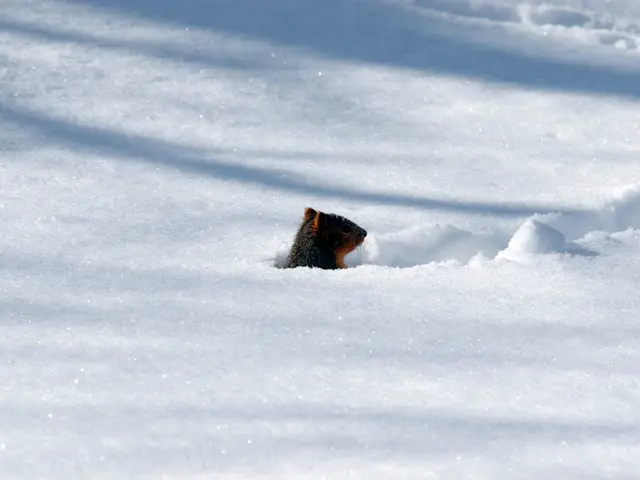Unusual Development Traced in Earth's Most Peculiar Species, Revealed in Recent Research
** discover the evolutionary secrets of weird creatures: platypus and echidna! 🎉 Hop aboard as we dive into the exciting world of these monotremes, the only mammals laying eggs! Sign up for CNN's Wonder Theory science newsletter** and never miss a fascinating insight!
The platypus and echidna, found in the lands of Australia and New Guinea, are some of the strangest animals on the planet. Their unique features include egg-laying and the lack of teeth. But even their origins have remained elusive, until now.
A long-extinct ancestor comes to light
Recent research, published in the journal Proceedings of the National Academy of Sciences, sheds light on the evolutionary history of the monotreme ancestor Kryoryctes cadburyi. Discovered in 1993, the fossil, a humerus (upper arm bone), was believed to resemble a land-dwelling echidna. But a closer look using advanced 3D imaging techniques unveiled some unexpected surprises.
Examining an ancient fossil from the inside
Dr. Suzanne Hand, a professor emeritus at the University of New South Wales, and her team analyzing the fossil saw that it had characteristics closer to the modern platypus. Its internal structure showed thicker bone walls and smaller central cavities, which are beneficial for aquatic life as they help reduce buoyancy and make diving easier. This finding supports the theory that Kryoryctes cadburyi might have been a common ancestor of both platypus and echidna, and lived a semi-aquatic life during the time of dinosaurs.
Redefining monotreme evolution
The study reveals that the amphibious lifestyle of modern platypuses has origins reaching back at least 100 million years, challenging our understanding of monotreme evolution. Echidnas, on the other hand, might have reverted to a fully terrestrial lifestyle later on.
This is fascinating because the land-to-water transition in animals is rare and requires substantial changes to the musculoskeletal system. It's amazing to think that the backward feet of echidnas could be a remnant of its aquatic ancestor that used them as rudders.
Dr. Guillermo W. Rougier, a professor at University of Louisville, who wasn't involved in the study, praises the research: "It elegantly proves the suggestion that these animals were adapted to a semi-aquatic life very early on." This sheds light on the adaptability of these ancient creatures and their role in early mammalian evolution.
Monotremes, like platypuses and echidnas, are "living relics" from a distant past, providing valuable insights into our own evolutionary history. As Amanda Schupak puts it, "There is no way to predict the biology of this last common ancestor without animals like monotremes."
- The evolutionary history of the monotreme ancestor Kryoryctes cadburyi has been unveiled through recent discoveries published in the Proceedings of the National Academy of Sciences.
- Initially thought to be similar to land-dwelling echidnas, the fossil's examination using advanced 3D imaging methods revealed features closer to modern platypuses, suggesting a possible common ancestor.
- The study finds that the semi-aquatic life of modern platypuses may have evolved as early as 100 million years ago, challenging our understanding of monotreme evolution.
- Echidnas, on the other hand, might have later reverted to a completely terrestrial lifestyle.
- This research highlights the adaptability of ancient creatures and their impact on early mammalian evolution, as well as shedding light on the unique biology of monotremes.
- As we continue to explore the mysteries of science, from space and astronomy to health and wellness, nutrition, fitness and exercise, it's important to appreciate the 'weirdness' found in creatures like the platypus and echidna, helping us better understand our own evolutionary history.










